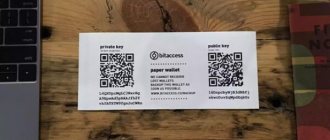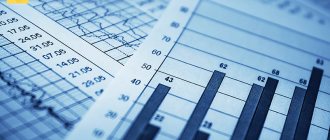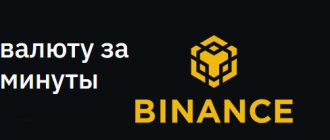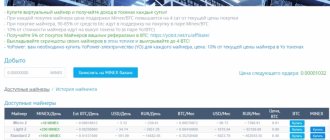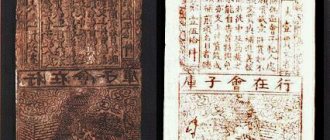The Chicago Mercantile Exchange (CME, often referred to as the "Chicago Merc" or "Merc") is the world's largest global market. derivatives. Today, the CME is the largest market for options and futures contracts with open interest (the number of outstanding contracts) of any futures exchange in the world, as well as several types of popular financial instruments: interest rates, stocks, currencies and commodities.
History of the exchange
Let's start with a short excursion into history. In 1848, the first chamber of commerce was opened in Chicago. This chamber of commerce was an open-air market where the founders of the chamber traded grain and enforced contracts. This trading format suited everyone - participants in transactions could immediately check the quality of the products, because all the goods were presented right there. Monitoring the fulfillment of contract terms was also quite simple.
The Chamber of Commerce was a huge success, so many merchants also founded their own versions of this organization. As a result, several similar chambers were opened in Chicago over a couple of decades, each of which specialized in a certain type of product. In 1874, the Chicago Produce Exchange opened, an exchange where butter and eggs were traded. It is this that in the future will become the Chicago Mercantile Exchange (Chicago Mercantile Exchange, abbreviated as CME).
By 1919, it was decided to expand the range: other agricultural products appeared in the list of traded assets: potatoes, turkey, onions... In the 70s, currency was added to the assets, which turned out to be a very good decision. In 1980, the list of assets was supplemented with futures on stock indexes. From that moment on, the Chicago Mercantile Market finally became the Chicago Mercantile Exchange.
Until 1992, CME conducted transactions only offline. In 1992, the Globex electronic platform was introduced, which allowed traders and brokers to work from the office or from home.
The Chicago Mercantile Exchange became the first American exchange to issue its own shares in 2002. Now most of these shares are traded on the New York Stock Exchange and are very highly valued there.
Mergers in recent years
Remember those chambers of commerce that appeared in Chicago in the mid-19th century? Some of them also developed, like the Chicago Produce Exchange, and have survived to this day. The Chicago Mercantile Exchange successfully merged with one of them: in 2007, the commodity exchange merged with the first chamber of commerce (the same one where grain was traded in the open air in 1848). The organization was named CME Group. It later included the COMEX and NYMEX exchanges, both based in New York.
Which companies are included in the CME group
To summarize: for 2022, the CME Group includes:
- Chicago Board of Trade (CBOT);
- Chicago Mercantile Exchange (CME);
- New York Mercantile Exchange (NYMEX);
- New York Metal Exchange (COMEX).
CME mergers
The NYSE has repeatedly offered to buy the Chicago Stock Exchange. Analysts estimate the value of the 136-year-old Chicago Stock Exchange to be between $50 million and $100 million. The New York Stock Exchange will pay $70 million to buy CHX, so the contract price seems fair.
The Chicago Stock Exchange is a very small organization. CHX has just 80 employees and accounts for less than one percent of U.S. equity trading. However, it was known that the company was looking for buyers. One of his recent statements explicitly stated that the owners were exploring a sale.
Interestingly, the NYSE is not the first to buy CHX. Not so long ago, a month and a half ago, the US administration blocked the sale of the Chicago stock exchange to Chinese investors - the blocking authority was the Securities and Exchange Commission (SEC). North America Casin Holdings was planning to buy it at that time. Both organizations (i.e., CHX and NYSE) did not respond to requests for comment on this issue. However, it doesn't take long to guess that the New York Stock Exchange, as the most famous, largest and American stock exchange, has a much better chance of completing the purchase of CHX.
In addition, the amount offered by the NYSE is three times the amount offered by Chinese investors (investment group North American Casin Holdings), who are lining up at $27 million.
What are the advantages of trading on the CME exchange?
The main advantage of trading on CME for beginners is the low entry threshold. This exchange specializes in futures, and speculation on these securities does not require serious capital. You can start trading with a minimum volume of contracts, which you can probably afford even without savings.
Another advantage is a very powerful information system. CME offers traders a stream of market information that can be used to make trading decisions. This is a paid service, but it is inexpensive and pays for itself very quickly.
How the auction works
The Chicago Mercantile Exchange still operates on the Globex system, introduced in 1992. However, it has been supplemented and revised many times, so it fully supports modern trading standards. Trading is conducted in the same way as most of my readers are accustomed to: using a trading terminal through the broker’s server, a trader places an order to buy or sell an asset. You can specify a specific price and wait for a counter offer, or you can simply buy or sell an asset at the most favorable price for you. The application is closed when the buyer finds a seller and vice versa.
Chicago is one of the last places where you can still trade live, right on the floor, shouting down your opponents. Voice bidding takes place in the CME skyscraper located in Chicago. There you can still immerse yourself in the atmosphere that many novice traders imbued with after watching films like “The Wolf of Wall Street.” However, this is not the most practical way to trade, so now it accounts for only 15% of all transactions on the Chicago Mercantile Exchange. In addition, it is very difficult to get into such auctions.
Chicago Stock Exchange opening hours
Trading on CME, like most other exchanges in the world, is carried out on weekdays. On holidays and weekends the exchange does not process orders. You can always find the current schedule of the Chicago Mercantile Exchange on its official website. Each asset presented on CME has its own trading schedule. For example, oil futures begin trading at 9:00 local time, and corn options begin trading at 8:30. The trading schedule is periodically adjusted: the beginning and end of trading, clearing time, duration of trading sessions, and so on change. Therefore, it is always worth checking the schedule published on the official website.
Do you know what clearing is? If you are not yet familiar with this term, be sure to read the article: “What you need to know about clearing.”
Bidders
If you are already familiar with how the Moscow Exchange works, then the list of trading participants on the Chicago Mercantile Exchange may surprise you a little. In addition to the usual brokers, traders and investors, there are market makers here. Who are they?
Market makers are companies whose job is to maintain the liquidity of certain assets. Market makers, like brokers, must be authorized legal entities. They enter into an agreement with the exchange. The market maker ensures the execution of an order to buy or sell an asset. On the stock exchange, up to ten market makers usually fight among themselves to execute an order. For every offer to buy an asset, they must find an offer to sell and secure a deal that satisfies both the seller and the buyer. If the transaction is not completed for any reason, the market maker executes an order to purchase an asset from its reserve. Each market maker has a list of assets that they service. For example, if a particular market maker maintains the liquidity of oil futures, then he has a large supply of these securities. If for any reason orders to buy these futures cannot be filled by the regular sellers on the exchange, the market maker completes the trade using a future from its reserve.
Participants (market makers, brokers)
On an exchange of such a level as CME, market makers are required to participate. These are authorized players who have entered into agreements with CME, according to which they undertake to provide liquidity for certain trading instruments.
In conditions of round-the-clock exchange trading, certain periods of time may be illiquid, that is, sharp gaps in supply and demand occur. Such situations are smoothed out by market makers.
Brokers are also present on the Chicago Mercantile Exchange.
US legislation allows private traders to participate in exchange trading exclusively through their intermediary. The official website of the Chicago Mercantile Exchange contains up-to-date information about the most reliable brokers.
How to list on the stock exchange
Want to start trading on the Chicago Mercantile Exchange? The registration algorithm will be similar to the Russian one:
- Find a broker who works with CME.
- Create an account with him and top up your account.
- Trade.
The key problem for a Russian trader is precisely finding a suitable broker, but we will return to this issue later.
Be that as it may, almost anyone can trade on CME on the Internet - if only there were financial opportunities. But getting into the voice auction is much more difficult. First, you must be in Chicago. Secondly, you need to pay for a membership to the Chicago Mercantile Exchange (from $300 per month). Third, you must be recommended by at least two current members of the Chicago Mercantile Exchange.
Please note that in Russia you can trade on the stock exchange from the age of 18, but in America - only from the age of 21.
Pros and cons of the Chicago Stock Exchange
CME is the world leader in futures trading. Prices for futures formed here are now considered almost a standard for other regional exchanges. CME offers a huge range of futures from a wide variety of industries. However, other instruments are represented here quite widely.
The main disadvantage of the exchange for Russian traders is its location in America. Because of this, firstly, it is more difficult to gain access to trading. It's possible, but quite difficult. We’ll talk about how to trade on the Chicago Mercantile Exchange from Russia below. Secondly, not all traders speak English well enough to trade fluently without using a dictionary. Thirdly, due to the geographical location of the exchange server, Russian traders may experience slight delays in displaying quotes. This is usually not a big deal, but if you prefer short-term trading where seconds count, the delay can cause problems.
Speculation and volatility of 1600 points in 1 minute on CME
CME does not comment on the July 6, 2017 silver price flash crash. Silver futures prices on the COMEX trading platform collapsed in a short time, with the price of the first available (most active) September futures falling from $16.06 to a low of $14.34, all in a period of 1 minute. In the next 2-3 minutes, the futures price then recovered almost all of its losses. From high to low, this COMEX futures contract fell almost 10.7% before rebounding almost 11%.
In total, over 8,300 September silver contracts were traded in 4 minutes.
What assets and commodities are traded here?
The main focus of the Chicago Mercantile Exchange is futures and options on a wide variety of assets. Here you can find time-based securities based on wheat, indices, stocks, cryptocurrency and a host of other underlying assets.
Futures can be found on the exchange:
- to indexes;
- currency;
- interest rates;
- cryptocurrency;
- agricultural products;
- fuel;
- metals;
- real estate in American cities.
List of the most liquid futures
Liquidity is a very important indicator of futures. Let's look at the five most liquid futures on the Chicago Mercantile Exchange:
- Corn (ZC). It is agricultural goods that are most liquid here. On average, more than 350 thousand transactions are made with corn futures in one trading session.
- Soybeans (ZS). Every day, traders make about 200 thousand transactions in soybean futures.
- NYMEX WTI (CL) oil. Trading volume is about 1.2 million futures per day.
- Natural Gas Henry Hub NYMEX (NG). On CME, about 400 thousand transactions for the supply of this product are concluded every day.
- S&P500 Index (ES). ES futures help minimize the risk of fluctuations in the largest US stock index. Tens of thousands of traders are ready to take advantage of this opportunity, which provides this commodity futures with high liquidity.
Choosing a broker for trading financial instruments
The widest selection of financial instruments for working in DIFFERENT markets is presented in the TOP - 13 recommended companies of the major league of broker ratings of the Masterforex-V Academy. These are 1. Nord FX, 2. Dukascopy Bank SA, 3. FXPro, 4. Interactive Brokers, 5. Alpari (Alpari), 6. Swissquote Bank SA, 7. OANDA (Oanda), 8. FXCM, 9. Saxo Bank ( Saxo Bank), 10. FOREX.com, 11. FIBO Group, 12. Fort Financial Services (FortFS), 13. Finam (Finam).
According to statistics from our free autocopy rebate service pro-rebate.com, about half of successfully trading traders opened deposits with ]NordFx[/anchor] , which provides
- quotes EUR USD, GBP USD, GBP CHF, GBP AUD, GBP CAD, GBP NZD, CHF JPY, AUD JPY, USD JPY, USD CHF, NZD JPY, USD CAD, NZD USD, AUD USD, USD RUB, EUR RUB, AUD CHF, USD UAH, USD BYN, USD SEK, USD NOK, USD CNY, EUR CHF, EUR JPY, EUR GBP, EUR NZD, EUR AUD, EUR CAD, EUR NOK, EUR SEK, GBP JPY, GBP SEK, GBP NOK and etc.;
- indices S&P 500, Dow Jones 30, DAX 30, NIKKEI 225, FTSE 100, NASDAQ-100;
- 16 cryptocurrencies - BTC, ETH, XRP, LTC, BTG, ETC, EMR, NEO, OMG, EOS, IOT, DSH, ZEC, etc.;
- cryptocurrency indices - 10ALT (10 altcoins per USD), TOP14Crypt (14 cryptocurrencies per US dollar), TOP3ALT (3 altcoins per US dollar), etc.;
- CFD of oil, gold, silver, etc.
- investments in balanced investment portfolios of large global investment funds with trust management (MD) Pro-Industry Fund, Pro-TECH Fund, Pro-Expert Fund and American shares of the NYSE and NASDAQ - Intel Corp., Microsoft, McDonald's, Apple, Motorola, Boeing, Alibaba, Nike, Coca-Cola, Visa Inc., PayPal, Google, Facebook, Ferrari, 21 FOX, Pfizer, HP Inc, Jonson & Jonson, Nvidia, Cisco, Electronic Arts, Mastercard, PayPal, Fedex, etc.
- PAMM and RAMM accounts.
The broker provides
- a trading platform familiar to all traders for Meta Trader 4, Meta Trader 5 and Meta Trader 4 Mobile traders with the largest group of built-in indicators and oscillators for technical analysis of forex charts, stock, commodity and cryptocurrency markets;
- minimum trading account from $10 recommended deposit for money management MF from $800-$1000 when trading 0.01 lot)
- leverage from 1:50 to 1:1000;
- All types of trading strategies are allowed, from automated advisors to day trading, swing trading, long-term, medium-term and position trading, scalping, the use of martingale, anti-martingale methods, etc.
- financial regulation CySEC in the EU.
When opening a real trading account from $3000 at NordFx, each trader receives the opportunity to receive free training for 1 year at the Masterforex-V Academy with daily trading tips on a closed forum and on Skype.
How to trade on CME from Russia
A complete list of brokers with whom CME currently cooperates can be found on the official website of the exchange. At the time of writing, there are 340 brokers represented on the site. Before entering into an agreement with a broker promising access to the Chicago Mercantile Exchange, be sure to check if he is listed on the site! If he is not there, then the Chicago Exchange will not recognize him as a partner, and you will not be able to trade through him.
The CME website allows you to sort brokers by country - despite the very long list of countries, the Russian Federation is not here. So traders from Russia have no other choice - the best option would be foreign brokers with access to CME.
Best brokers
Here are a few proven brokers that may be suitable for working from Russia:
- Interactive Brokers. This broker has Russian-language technical support.
- CapTrader. The broker works only on commission, without subscription fees.
- Lightspeed. The broker allows you to open an account with a fairly low minimum deposit.
- TD Ameritrade. Compared to other brokers, the commissions for foreign citizens are quite low.
Part 3. CME Group today
Modern Chicago is one of the main financial centers of the United States. In addition to the CME Group, it is home to one of the 12 Federal Reserve Banks and a number of other influential financial institutions. The city's business center, called the Chicago Loop, ranks second in the rankings after Manhattan. The headquarters of major corporations are located on its territory - Boeing, United Airlines, etc.
It is here, in the Chicago Loop skyscraper, next to the branch of the US Federal Reserve Bank and other serious institutions, that the headquarters of the CME Group is located.
This skyscraper was built in 1930 by Holabird and Root and is considered one of the landmarks of downtown Chicago. Its height is 185 meters (at the time of opening, the building was the tallest in Chicago). The luxury of the architectural project embodied the grand scale of stock exchange trading on the eve of the Great Depression (however, the skyscraper was commissioned when the shadow of the crisis had already begun to creep over America). The Art Deco skyscraper sparkles with mirrored surfaces and admires the marble decoration of the lobbies. The building has become one of the architectural dominants of the Chicago financial center, a visual anchor of Chicago Wall Street - Lassalle Street. Subsequently, it expanded several times as stock trading in Chicago gained momentum.
The Chicago Board of Trade (CBOT) moved into this magnificent building. Architectural luxury reflected the financial power of this organization. The skyscraper was crowned with a 9-meter statue of the goddess Ceres, made of sparkling aluminum. The use of this metal, fashionable at that time, symbolized a focus on the future, development, and compliance with the latest trends. And the statue of Ceres, in turn, symbolized the agricultural specialization of the Chicago Board of Trade, wealth and abundance.
After the merger of CBOT and CME, the skyscraper became the headquarters of the CME Group. Despite the fact that a wide variety of assets are now traded on this exchange, the building is still crowned with a statue of Ceres - as a reminder of the history of the CME Group and a symbol of prosperity .
The group's headquarters and sales area are located at 20 South Wacker Drive, Chicago, Illinois 60606 . There is also a CME Group trading floor with an area of 5,500 square meters. m, where voice trading takes place. Previously, the noise here was so strong that traders developed their own sign language. These days, only a small volume of trades flows through CME Group's trading floor. Over 95% of trading transactions are now conducted through the Globex platform . Therefore, it is absolutely not necessary to come to Chicago to trade - you can trade via the Internet.
Globex electronic trading lasts almost around the clock: 23 hours every working day , with a break of one hour.
The influence of the CME Group has long crossed not only the borders of Chicago, but also beyond the borders of the United States. CME Group has regional offices in several cities in America and five other countries. They are located in Washington, New York, Houston (USA), London (UK), Tokyo (Japan), Sydney (Australia), Singapore and Hong Kong.
3.1. Who trades on the CME
The Chicago Mercantile Exchange is a meeting place for millions of market participants - from individuals to giant corporations. Both farmers and large commodity companies, including international ones, enter into contracts on the CME Group platform. Even more traders participate in stock trading not for the sake of selling or purchasing a specific product, but to reduce risk by diversifying assets and making money on price fluctuations. These are investment and commercial banks, hedge funds, pension funds, financial consultants.
There are also independent traders on the exchange - single players, individuals. Thanks to the Internet, their number is constantly growing. These are young people and mature people, men and women (in the USA, more than a quarter of traders are already of the fair sex). There are no restrictions for private trading - you only need a certain amount of deposit, an understanding of the essence of exchange trading and desire.
Entrance to the trading platform is provided by the broker. You can check its reliability on the websites of the CME Group and NFA (US National Futures Association).
To open an account with a broker, you need a minimum of documents. For example, an ordinary civil passport is enough for a Russian.
So we can rightfully say that the Chicago Mercantile Exchange is a democratic platform where anyone can start trading...
- within your budget;
- according to a personally chosen strategy;
- and those assets that he chooses - and there are over seventy of them on the CME.
3.2. What is traded on the CME
Reading about the history of the CME Group, you already understood that exchange trading has evolved from narrow specialization towards global coverage of assets. During the 20th century, the exchange consistently expanded the list of goods for which futures contracts can be concluded. Now traders on the CME trade the most valuable, liquid assets of the global economy - from raw materials and energy to currencies and precious metals. In addition, futures contracts on industrial indices, interest rates and other assets of a complex financial nature are used to diversify risk.
The main groups of assets represented on the Chicago Mercantile Exchange:
- Agricultural products. Just like a century and a half ago, people need wheat and rice, corn and soybeans, coffee and cocoa, sugar and cotton, meat and oil. Traditional agricultural assets remain abundantly represented on the CME.
- Metals. There are futures and options for both base metals and precious metals - gold, platinum, silver. Some players hedge price risks through these contracts, while others consider precious metals for long-term investments. The most liquid asset in this category, like centuries ago, is considered to be gold.
- Energy. Oil, gas, coal, and various types of fuel are highly liquid assets that reflect the importance of these resources for the global economy. The most liquid asset in this category is oil.
- Currencies. The CME presents about twenty currencies of developed countries, including the dollar (American, Canadian, Australian), euro, yen, yuan, and, from 2022, bitcoins. Although this trading platform is not a foreign exchange exchange, it is the second largest electronic foreign exchange market on the planet. Two assets from this group - the euro and the yen - are among the CME's most liquid assets.
- Stock indices. These are derivative financial instruments that demonstrate very high liquidity (the S&P 500 stock index is the leader in liquidity on the CME). Indices reflect the state of industry and the economy (for example, the already mentioned S&P 500 index includes 400 industrial and 100 financial, utility, and transport corporations). The Chicago Mercantile Exchange is currently the world's leading platform for trading futures and options on American, European and Asian indices. By the way, the famous Dow Jones index belongs to the CME Group.
- Interest rates. Futures are open for interest rate swaps, Eurodollars, credit default swaps, and US Bank Treasuries. By the way, US Treasury securities, which are conservative and low-risk investment instruments, demonstrate excellent liquidity. the US Bank 10-year Treasury futures contract is one of the most liquid assets on the CME.
- Alternative investment instruments. If you want, you can make money by predicting fluctuations in real estate prices and even... by weather forecasts. Snowfalls, hurricanes, and temperature fluctuations carry a certain risk for the economy, and the corresponding futures are also traded on the stock exchange.
Trading indices
CME trades both American indices (S&P500, mini S&P500, Nasdaq-100, mini Dow, mini Russell 2000, mini S&P MidCap, Dow Jones RealEstate) and international ones (Nikkei, mini FTSE China50, mini FTSE 100, Ibovespa). Let's look at these tools in a little more detail.
Prospects for investing in indexes
An index is a very popular long-term investment option. They reflect the general state of the market or industry, and therefore are fairly low-risk products. Despite this, most of the indices presented on the CME are growing, outpacing inflation (both in the USA and Russia).
You can read more about stock market indices in the article: “Stock market indices: what they are and why they are needed.”



